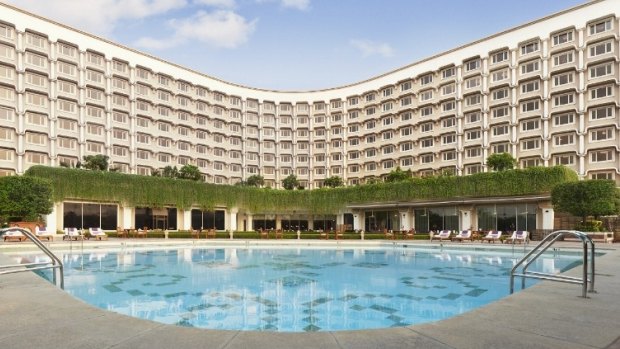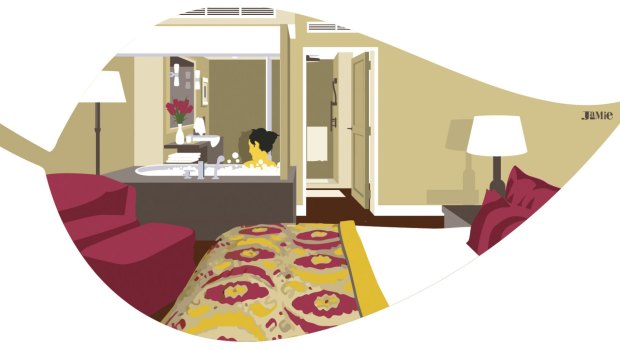This was published 4 years ago
Taj Palace New Delhi: The surprising place shifting focus to sustainability
By Julie Miller

Taj Palace, New Delhi.
The best things in life may have once been free, but now they are the hallmarks of luxury. Clean air. Pure water. Fresh, organic food. A care of duty for the local community. The essentials of life, diminished in humanity's grab for dominion over this planet but now being revered in the upper echelons of the travel industry.
Nowhere is the trend of sustainability more significant than in India, the home of five-star indulgence. From opulent accommodation in literal palaces, to attentive hospitality fit for royalty, India's leading hotels have for decades offered an excessive blast from its imperial past, all pomp and circumstance showered with rose petals.
But with a population of 1.35 billion and a toppling slagheap of environmental issues, India has shifted its hospitality focus from not just making its guests feel important, but to actually improving their quality of life.

India hotel.Credit: Jamie Brown
In the gleaming, peacock-shaped marble lobby of the Taj Palace New Delhi, a board proudly displays the air quality Index of its guest rooms, a negligible 11 AQI thanks to an electro-magnetic air filtration system that provides clean, pure respite from the toxic "see it, breathe it" blanket of fumes (often over a hazardous 500 AQI) that shrouds Delhi every winter. It's something that bushfire stricken Australians can now sadly relate to.
Eliminating single-use plastics – another horrifying and highly-visible scourge throughout India - is next on the hotel's agenda, with a new water bottling plant set to eliminate millions of plastic bottles each year by replacing them with reusable glass. Plastic straws have already been ditched in favour of paper and bamboo, and those horrid dinky amenity bottles are also on the chopping block, the hotel's final frontier in its war on plastic.
Constructed in 1982, the Taj Palace's austere and outdated exterior could easily have seen it slip into retro oblivion, overtaken by more modern or romantic heritage hotels as the accommodation of choice for heads of state and business leaders visiting Delhi.
But with recent refurbishment and a bid for sustainability (Taj Palace holds EarthCheck gold certification, while another eight IHCL sister properties have achieved platinum status under the push for green credentials), the hotel remains a bastion of serenity and understated elegance, Mughal design elements adding a sense of place against a contemporary backdrop.
But still, it's the simple things that contribute to the sense of unadulterated privilege that comes with the art of the five-star hotel. Like filling my lungs with fresh air. Or the welcome gift of a freshly-drawn bubble bath scattered with rose petals. Now, excuse me while I indulge…
Julie Miller was a guest of Mantra Wild, India Tourism and Taj Hotels.
Sign up for the Traveller newsletter
The latest travel news, tips and inspiration delivered to your inbox. Sign up now.